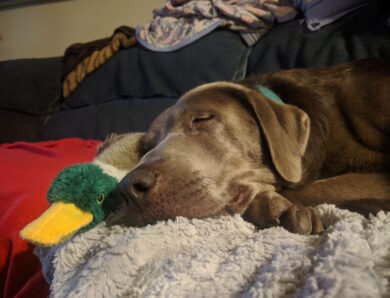We already know our favorite pooches and pups descended long ago from wolves, but the timeline of that evolution has always been murky. A 2020 study, however, has shed some light on the evolution of the modern dog, revealing that there were already at least five different types of dogs more than 11,000 years ago, in the time period immediately after the last Ice Age.
What’s more most dogs today are related to, even if just faintly, at least one of these breeds.
Leading the Pack
To reach their findings, a research team gathered bones from 27 dogs, some of which lived up to nearly 11,000 years ago in places across Europe, the Near East, and Siberia. Extracting and sequencing DNA from these bones, they found five distinct types of dogs.
At a time when no other animal had even yet been domesticated.
By comparing these genetic findings with those of modern dogs, scientists were able to determine that these original lineages have “mixed and combined” over the course of thousands of years. And are still present in today’s dogs.
The findings also revealed that the five ancient breeds, along with today’s modern breeds, can mostly be traced back to two distinct lineages: one coming from the Near East and the other from Siberia.
Present-day European dog breeds can all be traced back to the ancient mixing of these two lineages.
9 Mistakes Dog Trainers Say You’re Making
Dog and Human Evolution Intertwined

Even dogs associated with geographic areas outside of Europe and the Near East share a genetic history with these ancient pups. Breeds like chihuahuas and Mexican hairless dogs are largely European, though they do have some pre-Columbian DNA.
But how is that possible?
Quite simply, human movement across the globe shaped the evolution history of dogs.
In many cases, as people migrated and moved, they brought their dogs with them. In others, people may have traded dogs with other groups they met along the way.
What Are the Top 15 Best Dogs for a Family?
Less Diversity Today
One instance in modern dog’s evolution does not seem to mirror human history — the loss of diversity.
According to researchers, before 4,000 to 5,000 years ago, Europe had a much larger diversity of dog types. That is not the case today, despite the plethora of modern breeds. Despite the fact these breeds all look different, their lineage can be traced back to a small subset of dogs that once existed in Europe.
The reason for this loss of diversity is unknown, but what is clear is that at some point in time a single dog lineage spread across Europe, replacing all the others.
The 8 Best Dog Books for Young Children






